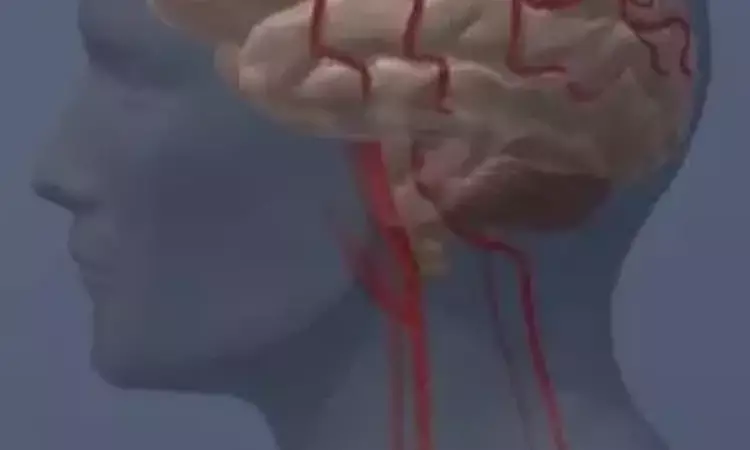- Home
- Medical news & Guidelines
- Anesthesiology
- Cardiology and CTVS
- Critical Care
- Dentistry
- Dermatology
- Diabetes and Endocrinology
- ENT
- Gastroenterology
- Medicine
- Nephrology
- Neurology
- Obstretics-Gynaecology
- Oncology
- Ophthalmology
- Orthopaedics
- Pediatrics-Neonatology
- Psychiatry
- Pulmonology
- Radiology
- Surgery
- Urology
- Laboratory Medicine
- Diet
- Nursing
- Paramedical
- Physiotherapy
- Health news
- Fact Check
- Bone Health Fact Check
- Brain Health Fact Check
- Cancer Related Fact Check
- Child Care Fact Check
- Dental and oral health fact check
- Diabetes and metabolic health fact check
- Diet and Nutrition Fact Check
- Eye and ENT Care Fact Check
- Fitness fact check
- Gut health fact check
- Heart health fact check
- Kidney health fact check
- Medical education fact check
- Men's health fact check
- Respiratory fact check
- Skin and hair care fact check
- Vaccine and Immunization fact check
- Women's health fact check
- AYUSH
- State News
- Andaman and Nicobar Islands
- Andhra Pradesh
- Arunachal Pradesh
- Assam
- Bihar
- Chandigarh
- Chattisgarh
- Dadra and Nagar Haveli
- Daman and Diu
- Delhi
- Goa
- Gujarat
- Haryana
- Himachal Pradesh
- Jammu & Kashmir
- Jharkhand
- Karnataka
- Kerala
- Ladakh
- Lakshadweep
- Madhya Pradesh
- Maharashtra
- Manipur
- Meghalaya
- Mizoram
- Nagaland
- Odisha
- Puducherry
- Punjab
- Rajasthan
- Sikkim
- Tamil Nadu
- Telangana
- Tripura
- Uttar Pradesh
- Uttrakhand
- West Bengal
- Medical Education
- Industry
Hyperbaric oxygen therapy shows promise for treatment of opioid addiction

SPOKANE: Wash-Hyperbaric oxygen therapy may help people being treated for opioid addiction reduce their methadone dose and better manage pain and withdrawal symptoms, according to a pair of studies led by Washington State University scientists.
The research team recruited participants enrolled in a local opioid treatment program to test the effects of hyperbaric oxygen therapy, a treatment that involves breathing pure oxygen in a pressurized environment.
Published in the Journal of Addictions Nursing, the first paper describes a pilot study of 31 participants that showed that those who had received hyperbaric oxygen therapy as part of a planned methadone taper were able to maintain a significantly larger dose reduction of 4.3 mg three months after the study, as compared to 0.25 mg in participants who did not receive the therapy. They also reported half the level of withdrawal symptoms experienced by control participants after only one day of hyperbaric oxygen therapy.
"While methadone helps people with opioid addiction get stable and resume their normal lives, it's still an opioid that they are taking every day," said study co-author Matthew Layton, a professor in the WSU Elson S. Floyd College of Medicine and a former opioid treatment program medical director. "About half of people in treatment want to get off of methadone for various reasons, yet many who have tried have failed and relapsed. Our findings suggest that hyperbaric oxygen therapy could potentially be used as a non-pharmacological tool to help people step down their methadone treatment."
The second study, which was published in Pain Management Nursing, was a small randomized controlled trial of eight participants that looked more closely at withdrawal symptom relief. It found that participants in the hyperbaric oxygen therapy treatment group reported lower pain intensity and drug cravings than control participants who had been given an oxygen mixture equivalent to room air delivered at normal atmospheric pressure. The researchers also saw improvements in other outcomes, such as sleep quality and mood.
"While for some the challenge is to get off methadone, others struggle to stay in treatment early on because finding the right dose to stabilize symptoms can be difficult to achieve," said first author Marian Wilson, an associate professor in the WSU College of Nursing and an expert on pain management and opioid use disorder. "As a result, a lot of people experience withdrawal symptoms in that adjustment period that can be severe enough to make them resume illegal drug use or drop out of treatment."
Based on the collective findings from the two studies, the researchers are pursuing funding for a clinical trial to confirm their findings in a larger sample of participants, who would be followed for several years.
The idea for the two studies came from earlier research by one of the WSU researchers that showed that hyperbaric oxygen therapy provided pain relief and reduced physical signs of opioid withdrawal in mice.
"We were anxious to see if it would work in people," said study co-author Raymond Quock, a professor in the WSU College of Arts and Sciences, who led that work.
If their findings hold up in a larger clinical trial, hyperbaric oxygen therapy could become a non-pharmacological tool that providers can use to help people manage pain and potentially reduce their opioid use.
"Last year, over 100,000 people died as a result of the opioid epidemic within the COVID-19 pandemic," said Layton. "That shows us that opioid addiction is still a very big problem, and we need to have better ways to approach it."
For further information,visit here:
Dr Kamal Kant Kohli-MBBS, DTCD- a chest specialist with more than 30 years of practice and a flair for writing clinical articles, Dr Kamal Kant Kohli joined Medical Dialogues as a Chief Editor of Medical News. Besides writing articles, as an editor, he proofreads and verifies all the medical content published on Medical Dialogues including those coming from journals, studies,medical conferences,guidelines etc. Email: drkohli@medicaldialogues.in. Contact no. 011-43720751


